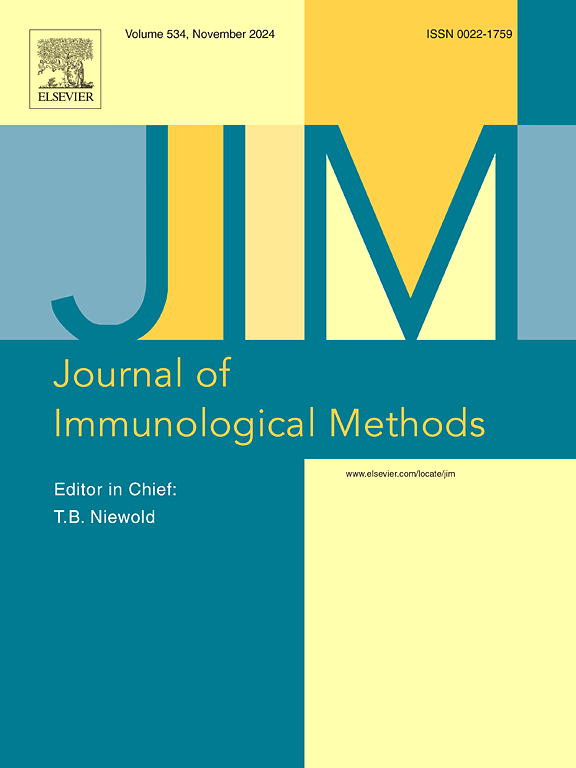NADPH氧化酶亚基p22phox:非吞噬细胞中氧化酶依赖性氧化应激的标志和应激抑制的靶标
IF 1.6
4区 医学
Q4 BIOCHEMICAL RESEARCH METHODS
引用次数: 0
摘要
产生活性氧(ROS)的NADPH氧化酶(Nox)家族蛋白参与宿主防御。ROS的过量产生导致氧化应激,这与无数疾病有关。Nox亚基p22phox对Nox1-4的活性至关重要,p22phox和Nox2蛋白在吞噬细胞中相互稳定。本研究探讨了p22phox蛋白作为氮氧化物活性标记物的适用性。为了避免被吞噬的p22phox污染,我们培育了全球Cybb(编码Nox2)敲除小鼠,并分析了p22phox的稳定性和各种组织裂解物中Nox蛋白的表达谱。我们发现,与吞噬细胞中的Nox2一致,当Nox1-4在非吞噬细胞中共表达时,也检测到p22phox蛋白。此外,Nox1-4抑制了p22phox蛋白的降解,表明p22phox是Nox家族依赖性氧化应激的合适标记物。因此,我们检测了cyb敲除小鼠制备的组织裂解物中的p22phox蛋白水平,以避免吞噬性p22phox的污染。cybb敲除小鼠肺组织中p22phox蛋白水平适度降低,提示Nox2和其他Nox家族成员稳定了p22phox蛋白。矛盾的是,这一结果表明p22phox敲低同时抑制了各种Nox家族依赖的氧化应激机制,这一点通过p22phox敲低的A549人肺上皮细胞中Nox家族依赖的定向迁移的抑制得到了证实。因此,p22phox不仅可以作为一氧化氮依赖性氧化应激的标记物,还可以作为多种组织和细胞中抑制这种应激的靶点。本文章由计算机程序翻译,如有差异,请以英文原文为准。
NADPH oxidase subunit p22phox: A marker of oxidase-dependent oxidative stress and target for stress suppression in nonphagocytic cells
Reactive oxygen species (ROS)-producing NADPH oxidase (Nox) family proteins are involved in host defense. The overproduction of ROS leads to oxidative stress, which is associated with a myriad of diseases. The Nox subunit p22phox is essential for Nox1–4 activity, and p22phox and Nox2 proteins are mutually stabilized in phagocytic cells. This study investigated the suitability of p22phox protein as a marker of Nox activity. To avoid contamination by phagocytic p22phox, we developed global Cybb (encoding Nox2)-knockout mice and analyzed p22phox stability and the expression profiles of Nox proteins in lysates of various tissues. We found that consistent with Nox2 in phagocytic cells, p22phox protein was detected when Nox1–4 were coexpressed in nonphagocytic cells. Furthermore, p22phox protein degradation was suppressed by Nox1–4, suggesting that p22phox is a suitable marker of Nox family-dependent oxidative stress. Thus, we examined p22phox protein levels in tissue lysates prepared from Cybb-knockout mice to avoid the contamination of phagocytic p22phox. Cybb-knockout mice show moderately reduced p22phox protein levels in lung tissue, suggesting that Nox2 and other Nox family members stabilized p22phox protein. Paradoxically, this result implied that p22phox knockdown concurrently suppressed various Nox family-dependent oxidative stress mechanisms, and this was confirmed by the suppression of Nox family-dependent directed migration in p22phox-knockdown A549 human lung epithelial cells. Therefore, p22phox not only served as a marker of Nox-dependent oxidative stress but also as a target to suppress this stress in various tissues and cells.
求助全文
通过发布文献求助,成功后即可免费获取论文全文。
去求助
来源期刊
CiteScore
4.10
自引率
0.00%
发文量
120
审稿时长
3 months
期刊介绍:
The Journal of Immunological Methods is devoted to covering techniques for: (1) Quantitating and detecting antibodies and/or antigens. (2) Purifying immunoglobulins, lymphokines and other molecules of the immune system. (3) Isolating antigens and other substances important in immunological processes. (4) Labelling antigens and antibodies. (5) Localizing antigens and/or antibodies in tissues and cells. (6) Detecting, and fractionating immunocompetent cells. (7) Assaying for cellular immunity. (8) Documenting cell-cell interactions. (9) Initiating immunity and unresponsiveness. (10) Transplanting tissues. (11) Studying items closely related to immunity such as complement, reticuloendothelial system and others. (12) Molecular techniques for studying immune cells and their receptors. (13) Imaging of the immune system. (14) Methods for production or their fragments in eukaryotic and prokaryotic cells.
In addition the journal will publish articles on novel methods for analysing the organization, structure and expression of genes for immunologically important molecules such as immunoglobulins, T cell receptors and accessory molecules involved in antigen recognition, processing and presentation. Submitted full length manuscripts should describe new methods of broad applicability to immunology and not simply the application of an established method to a particular substance - although papers describing such applications may be considered for publication as a short Technical Note. Review articles will also be published by the Journal of Immunological Methods. In general these manuscripts are by solicitation however anyone interested in submitting a review can contact the Reviews Editor and provide an outline of the proposed review.

 求助内容:
求助内容: 应助结果提醒方式:
应助结果提醒方式:


